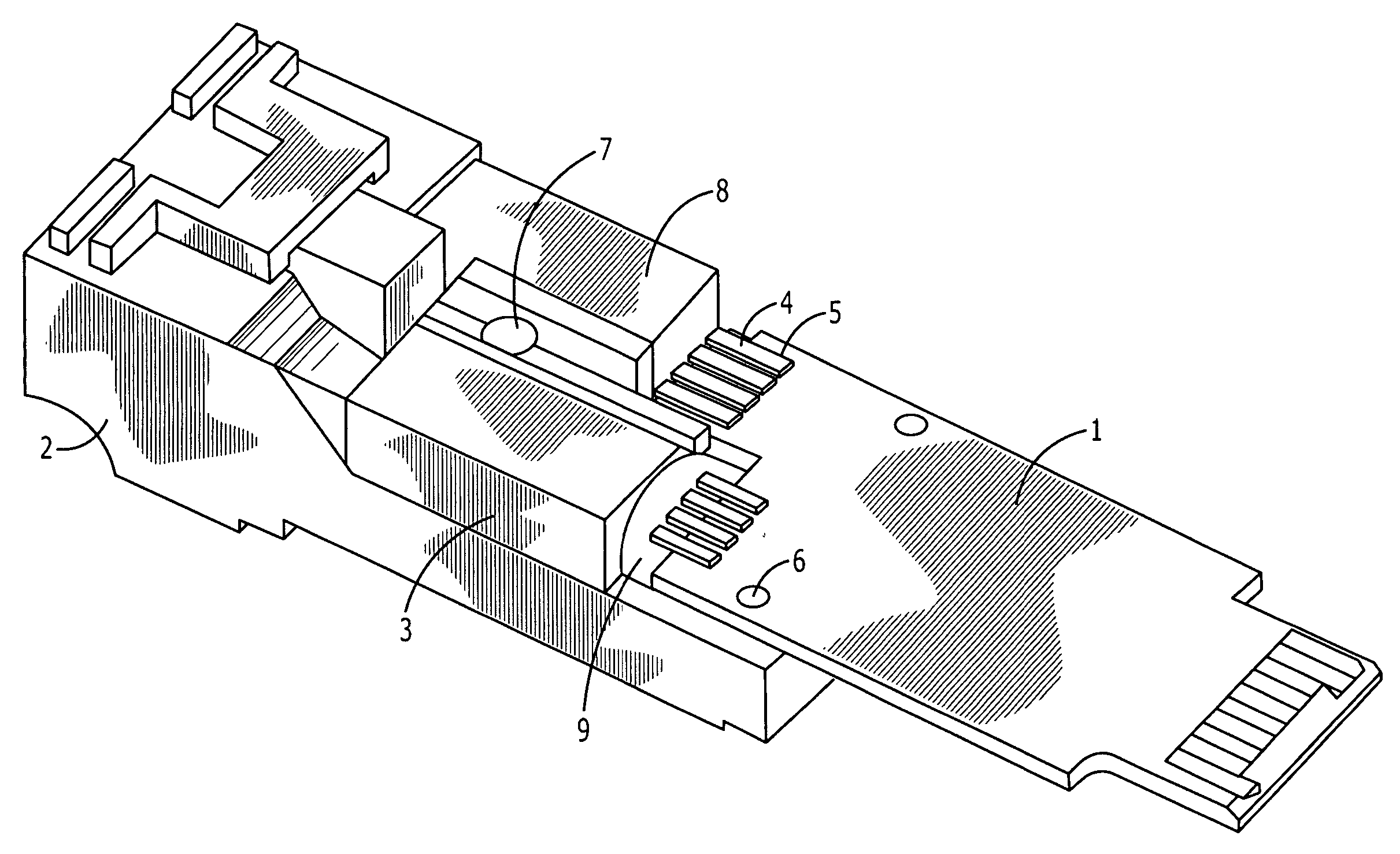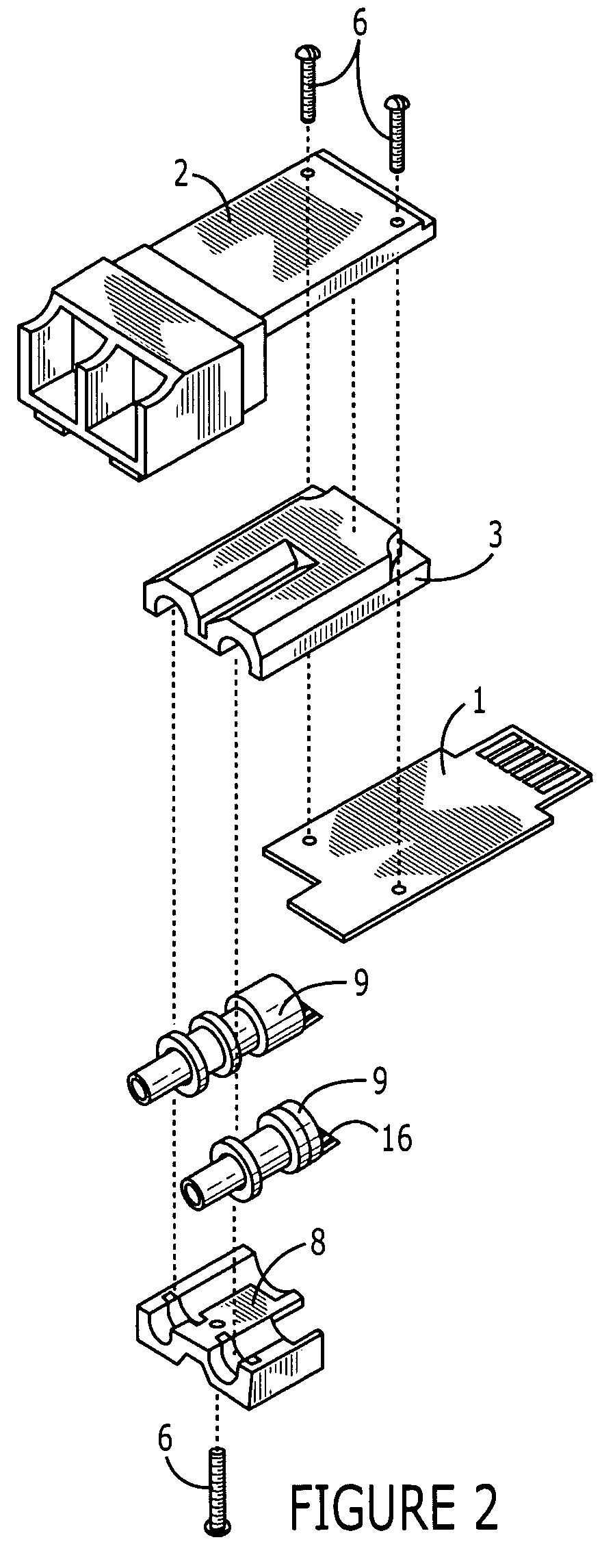Opto-electric module and method of assembling
a technology of opto-electric modules and modules, applied in the field of opto-electric modules, can solve the problems of compromising electrical performance, affecting the electrical circuit impedance, and introducing mechanical stresses between the osas, so as to achieve the effect of maintaining the electrical and structural integrity of the modul
- Summary
- Abstract
- Description
- Claims
- Application Information
AI Technical Summary
Benefits of technology
Problems solved by technology
Method used
Image
Examples
Embodiment Construction
[0028] The invention herein described is a method of assembling the components of an opto-electric module wherein the step of electrically coupling the components is deferred until the components are spatially disposed and the opto-electric module assembled by such method. Deferring the step of electrically coupling the individual components of the module until the components are assembled reduces the potential of mechanical stress occurring at the electrical connections of the module and on the hermetic seal protecting the interior elements of the OSA.
[0029] Referring to FIG. 1, an assembled opto-electric module is shown. This opto-electric module is designed to be part of an fiber optic communication system wherein the module receives an optical signal from an optical component, converts the optical signal to an electronic signal, optionally conditions the electronic signal, and then transmits the electronic signal to an electronic component (not shown). Alternatively, the module...
PUM
 Login to View More
Login to View More Abstract
Description
Claims
Application Information
 Login to View More
Login to View More - R&D
- Intellectual Property
- Life Sciences
- Materials
- Tech Scout
- Unparalleled Data Quality
- Higher Quality Content
- 60% Fewer Hallucinations
Browse by: Latest US Patents, China's latest patents, Technical Efficacy Thesaurus, Application Domain, Technology Topic, Popular Technical Reports.
© 2025 PatSnap. All rights reserved.Legal|Privacy policy|Modern Slavery Act Transparency Statement|Sitemap|About US| Contact US: help@patsnap.com



